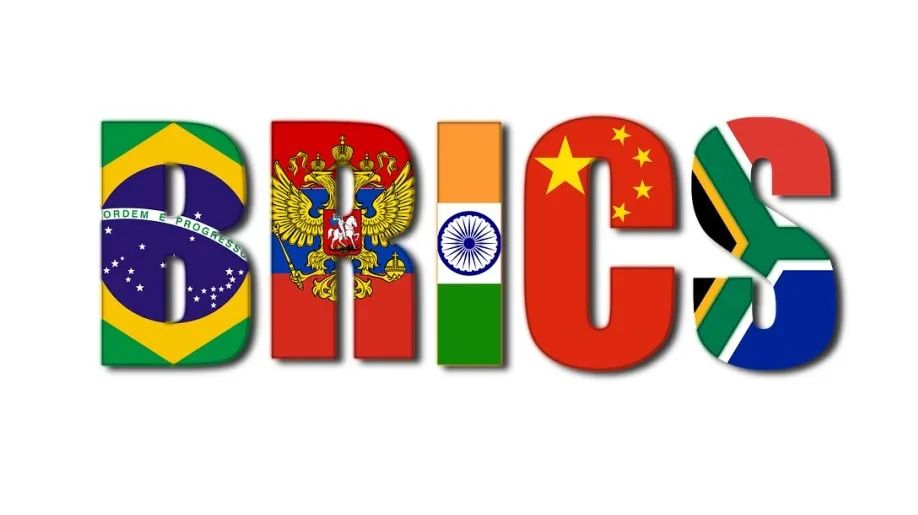On October 18, Jaya Josie, advisor of ZIBS China Africa Center, published an article in China Daily, illustrating his point that the BRI and BRICS+ group will be important factors in the development of trade and infrastructure investment to Africa.
The Belt and Road Initiative was proposed 10 years ago. To date the initiative links more than 150 countries across Asia, Africa, Europe and Latin America, covering two-thirds of the world's population and approximately 40 percent of the global GDP.
The initiative opens up investment opportunities for corporations in China and Belt and Road countries. Based on "China Belt and Road Initiative Investment Report 2023 H1-the First 10 Years" by Fudan University's Green Finance& Development Center, the initial data published in the first half of 2023 on 148 countries indicate 103 projects worth $43.3 billion. Globally, China's Belt and Road investment shows a marked increase of 130 percent in sub-Saharan countries of Africa, with a 69 percent increase in construction contracts. With this level of BRI investment, sub-Saharan Africa has become, after Southeast Asia, the second-most significant destination for BRI construction investment.

MA XUEJING/CHINA DAILY
The report suggests that the initiative includes more than 900 10-year infrastructure projects valued at $1.3 trillion across Eurasia, Southeast Asia and the Middle East. The funding for the projects will be backed by China's Silk Road Infrastructure Fund, the Asian Infrastructure Investment Bank and the BRICS New Development Bank.
There is a chorus of voices in the international media that paints China's BRI as promoting China's international economic agenda to control the flow of its resource inputs by focusing on transport access across countries and oceans. There is also the old narrative that China's loan agreements are creating a debt trap for emerging and developing economies.
In fact, China is promoting the initiative as part of its own policy of inclusive multilateralism. As one can see, many Western and Asian countries are members of the AIIB. As the BRICS+ group becomes concentrically linked with many Belt and Road countries and as many are themselves members of the BRICS New Development Bank, they will, like the other members of the NDB, benefit from the BRICS Contingent Reserve Arrangement.
The CRA will continue to be an important mitigating mechanism to address situations of financial crises. In this sense, it will contribute toward reinforcing the global financial safety net.

At the 15th BRICS summit held in August in Johannesburg, South Africa, the BRICS heads of state invited six more countries with emerging economies to join the group in January 2024. The invitation was based on BRICS' commitment to inclusive multilateralism and a set of principles, criteria, standards and procedures agreed to by all members of the original five members. The new members of the BRICS group come from Africa, Latin America and the Middle East, and many of them are beneficiaries of Belt and Road investments.
Also at the 15th BRICS summit, the leaders resolved that the BRICS+group will promote the use of their own currencies in financial transactions across the member states. Recently, according to the Bank of China, Brazil and China completed a transaction using their own currencies.
In the BRI and BRICS there are concerted efforts by economies to use their own currencies for financial transactions in response to the possible threat of restrictions for using the SWIFT system for cross-border payments. China has also introduced its own alternative to the SWIFT called the Cross-border Interbank Payment System. Such a move will facilitate the use of own currencies between the two countries.
In Africa, the African Continental Free Trade Area recently introduced the Pan-African Payment and Settlement System to facilitate intra-African trade in the local currency.
Within the original BRICS group, Russia has also developed its own respective financial transaction messaging system as an alternative to the use of the SWIFT system. This is called the System for Transfer of Financial Messages.
The PAPSS, CIPS and SPFS could become important platforms for the use of own currencies for cross-border payments within the BRI and BRICS frameworks.
The BRI and BRICS+ group will be important factors in the development of trade and infrastructure investment in support of the AfCFTA. To kick-start the process, the BRICS New Development Bank committed to issue bonds and finance infrastructure projects by raising funds in BRICS+ local currencies. There could also be a similar approach within the AIIB and the SCO. Should this approach become a reality, the BRI and the BRICS+ programs will show the way toward global win-win inclusive multilateralism.
Jaya Josie
Advisor
Advisor of ZIBS China Africa Center
Adjunct Professor of Venda University
*The article was originally published on China Daily: https://www.chinadaily.com.cn/a/202310/18/WS652f294aa31090682a5e91cf.html


.jpg)


